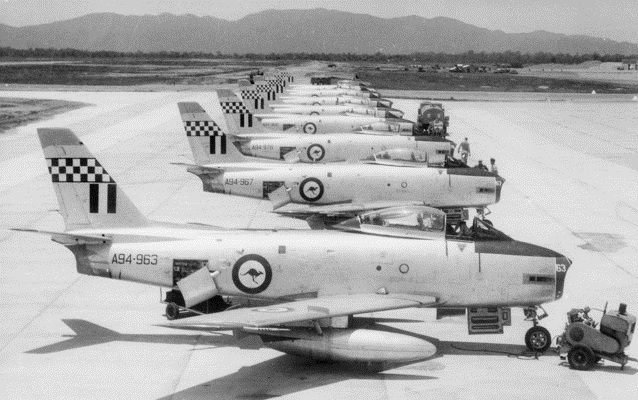
Between 1950 and 1972, the Malay Peninsula was a lynchpin of Australia’s defence policy. Then, as today, the international order was in a state of flux, a function of the complex interaction between post-colonial nationalism and the communist bloc’s challenge to the US-sponsored post-war order. In response, Canberra adopted a policy of ‘forward defence’, permanently deploying troops alongside the British to defend the nascent Federation of Malaysia.
By 1972, the British had departed, Malaysia and Singapore were independent, Sukarno had long since been ousted in Jakarta, and a détente had been reached with Beijing. Forward defence had ended. But Australia never quite quit the peninsula. As the British retreated from east of Suez, they sponsored the creation of the Five Power Defence Arrangements (FPDA), binding Australia, New Zealand and Britain to the ongoing defence of Malaysia and Singapore—though Australia was and remains the leading extraterritorial partner.
The FPDA is a strange animal. In the black letter, it is a collection of status of forces agreements stemming from a foundational communiqué, rather than a treaty, and obliges the parties to do nothing more strenuous than mutual consultation. It is best conceived of as a mechanism for coordinating Australia’s bilateral relationships with Malaysia and Singapore, rather than as an independent multilateral entity, and manifests itself institutionally as a panoply of consultative bodies, a cycle of multilateral military exercises, and an Integrated Area Defence System (IADS) covering the entire Malay Peninsula and commanded by an Australian air vice-marshal.
IADS is housed at RMAF Butterworth. This modest airbase in Penang state was run by the RAAF from 1958 to 1988, when it was handed over to the Royal Malaysian Air Force. The RAAF continues to deploy flights there on rotation, both for FPDA exercises and for Operation Gateway, Australia’s ongoing maritime surveillance operation in the Indian Ocean and the South China Sea. The RAAF celebrated its 60th anniversary at Butterworth in June, and it remains the only military facility in maritime Southeast Asia to which Australia has ongoing peacetime operational access.
Both the FPDA and the RAAF presence at Butterworth are occasionally dismissed as anachronisms of the Cold War, artefacts of history that have persisted beyond their shelf lives because militaries are loath to abandon tradition. Indeed, the FPDA’s prima facie surprising longevity is generally attributed to its unobtrusive design rather than any notable strategic ballast. Similarly, when Gateway commenced in 1980 it was tasked with tracking Soviet submarines transiting the Malacca Strait, yet it persists three decades after the fall of the Berlin Wall.
Nevertheless, Australia has enduring strategic interests in the security of Malaysia and Singapore that are rarely articulated. The frankest statement of those interests can be found way back in the 2000 defence white paper, which spoke to the central importance of fostering a ‘resilient regional community that can cooperate to prevent the intrusion of potentially hostile external powers … especially in maritime Southeast Asia, whether that threat came from outside or inside the region’ while clarifying that ‘membership of the FPDA serves [these] enduring Australian interests’. In other words, Australia’s commitment to the FPDA and its attendant infrastructure is fundamentally part of a soft double hedge against the possibility that either Jakarta or Beijing might ever seek to dominate maritime Southeast Asia, a first step towards projecting power against the Australian continent itself.
This merits re-articulation, because, for the first time since the Cold War, conflict between great powers in Asia has become thinkable again. The reordering of the regional balance of power generated by China’s rise has already begun to exhibit a direct, if subtle, impact on Australia’s presence in maritime Southeast Asia. In 2015, Gateway made a brief, unexpected cameo in the public consciousness when a BBC journalist in a Cessna overheard and recorded an Australian AP-3C Orion surveillance aircraft unsuccessfully radioing the Chinese navy. The incident aroused speculation that the RAAF was engaged in clandestine freedom-of-navigation operations over terraforming in the South China Sea. The Department of Defence quickly clarified that these flights were in fact routine—and had been for 35 years. Beijing now regularly protests the presence of the RAAF (and it’s perhaps also noteworthy that Canberra recently invested $22 million to develop the facilities at Butterworth, reportedly to accommodate the F-35 joint strike fighter).
So, what role does Australia envisage for the FPDA as the strategic order in the Indo-Pacific is reconfigured? Both the 2016 defence white paper (page 129) and the 2017 foreign policy white paper (page 44) emphasised Canberra’s ongoing commitment to the FPDA, but the most recent FPDA defence ministers’ meeting focused on counterterrorism.
For Australia, this is a secondary issue. The importance of insulating the Malay Peninsula against external threats will only increase in proportion to the degree of strategic uncertainty manifest in the region at large, and the FPDA ought to be fostered so that it does precisely what it was designed to do during the Cold War: balance against potentially hostile powers and insulate regional partners against coercion.
There are at least three immediate ways this might be accomplished. The first and most straightforward is to continue adjusting the settings on the FPDA exercise program to promote enhanced interoperability among the rapidly modernising capabilities of member states.
The second is to explore avenues for expanding the FPDA membership. The most obvious starting point is Brunei Darussalam, a member of the British Commonwealth.
Third, IADS could be extended to incorporate East Malaysia, including Kuala Lumpur’s recently reasserted territorial claims in the South China Sea. The FPDA is generally treated as if it applied only to Peninsular Malaysia, but this circumscription is merely customary; it’s not written into either the 1971 communiqué or its supporting documentation.
Alliances persist because they are consistently reimagined. There’s both ample scope and ample cause for Australia to promote a more muscular FPDA.

